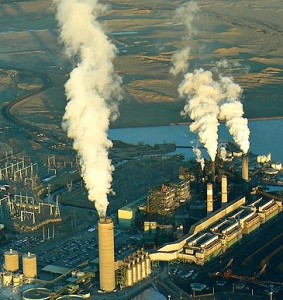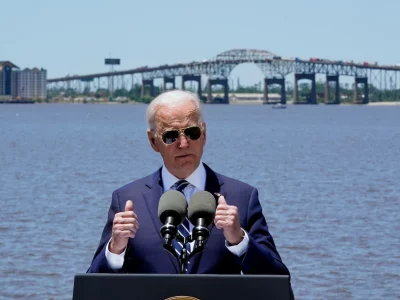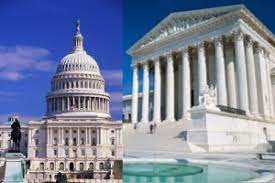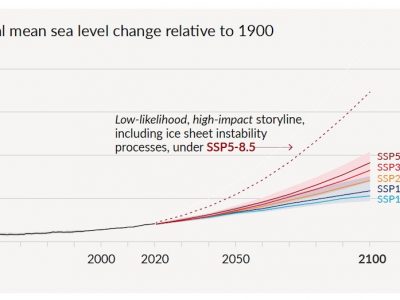Federal Climate Policy
Aggregating the Harms of Fossil Fuels
They’re even worse than you probably thought.
The decision at the Glasgow climate conference to phase down fossil fuels is an important step forward — and not just because of climate change. We think of fossil fuels as a source of climate change, but that’s only a one part of the problem. From their extraction to their combustion, everything about them is …
Continue reading “Aggregating the Harms of Fossil Fuels”
CONTINUE READINGThe Fuss about Methane
Part 1: Science and weird facts
Methane is getting a lot of attention in climate debates. There was even a “Methane Day” last Tuesday at the climate conference in Glasgow. Several new regulations controlling methane emissions have been adopted recently, including two new rules for the US oil and gas sector announced last week. There’s a new informal international agreement to …
Continue reading “The Fuss about Methane”
CONTINUE READINGThe Climate Bill inside the Infrastructure Bill
The US takes a major step forward on the path to carbon neutrality.
Late Friday, the House passed Biden’s infrastructure bill. As the Washington Post aptly observed, the bill is the biggest climate legislation to ever move through Congress. It also attracted key support from some Republicans, which was essential to passing it in both houses of Congress. Biden is pushing for an even bigger companion bill, but …
Continue reading “The Climate Bill inside the Infrastructure Bill”
CONTINUE READINGMajor Questions About the Major Questions Doctrine
You may not have heard of this doctrine but it’s a big threat to innovative regulations.
Unless you’re deeply immersed in administrative law, you may not have heard of the major questions doctrine. It’s a legal theory that conservative judges have used with increasing rigor to block important regulatory initiatives. The doctrine places special obstacles on agency regulations of issues of “major economic and political significance.” In its initial outing, the …
Continue reading “Major Questions About the Major Questions Doctrine”
CONTINUE READINGA Bad Week for Biden, and for Climate Action
First House progressives, and next conservative Justices, poked a stick in the spokes.
President Biden hoped to go to the international climate summit in Glasgow with momentum behind him. He wanted to reestablish US credibility with concrete progress on climate change. Instead, the ability of the US to take action on climate change is shrouded in doubt. Biden suffered an embarrassing defeat at the hands of members of …
Continue reading “A Bad Week for Biden, and for Climate Action”
CONTINUE READINGTackling Agricultural Methane: Monitoring and Policy Strategies
A review of inventory, monitoring, and regulatory tools needed to reduce agricultural methane emissions
(This post was authored by Eric Peshkin, a JD candidate at NYU School of Law and CLEE summer research assistant) Last week, global leaders announced a commitment to reducing global methane emissions. In a previous blog post, I briefly reviewed some of the innovative strategies to reduce methane emissions from agricultural livestock and rice operations, …
Continue reading “Tackling Agricultural Methane: Monitoring and Policy Strategies”
CONTINUE READINGThe Last Four Years — and the Next Four
How did our predictions about Trump hold up? What should we expect for Biden?
In September 2017, Eric Biber and I published a threat assessment after the first 200 days of the Trump Administration. For those who have buried their memories of that time, those were days of shock and despair about the future of environmental protection (and much else). It seems time to bring our report up to …
Continue reading “The Last Four Years — and the Next Four”
CONTINUE READINGHot off the Press: The New IPCC Report
The latest science confirms the need for urgent action.
The IPCC issued the massive first volume of its new report on climate change on Monday. This volume focuses on climate science: how much will the world warm, and what will the impacts be? The bottom line is that the evidence is becoming ever firmer that (a) humans are causing an unprecedented rate of climate …
Continue reading “Hot off the Press: The New IPCC Report”
CONTINUE READINGA Sleeper Provision in the Senate Infrastructure Bill
The bill gives the Feds broad authority to authorize transmission projects.
We will need a much more robust transmission in coming years. Sources of renewable energy, such as Iowa wind farms, are often located far from the urban centers that need the power. Transmission also helps to deal with weather issues that may impact renewables: even if it’s too cloudy for solar in one state, the …
Continue reading “A Sleeper Provision in the Senate Infrastructure Bill”
CONTINUE READINGTowards Optimal Climate Policy, Part II
The future of effective climate policy requires balancing equity, efficiency, political feasibility, and technological innovation
In the prior blog post in this two-part series, I talked about how current debates on climate policy that are focused on equity and efficiency are inadequate. Today, I’ll explain how we might advance political feasibility through climate policy, how that is connected to technological innovation, and how we must necessarily balance between all four …
Continue reading “Towards Optimal Climate Policy, Part II”
CONTINUE READING











